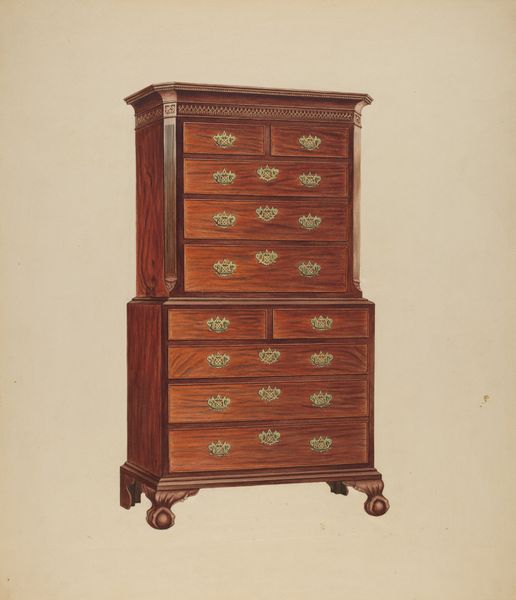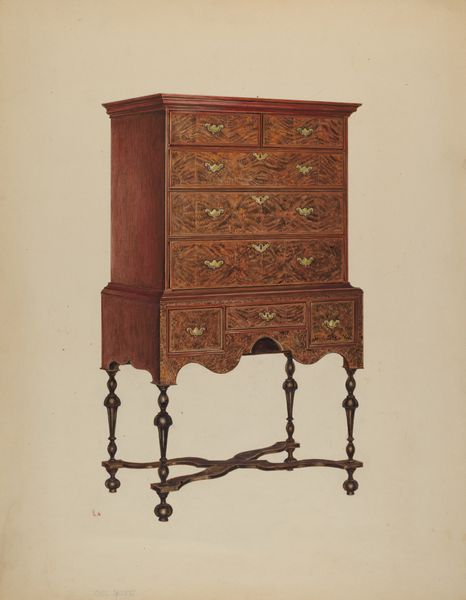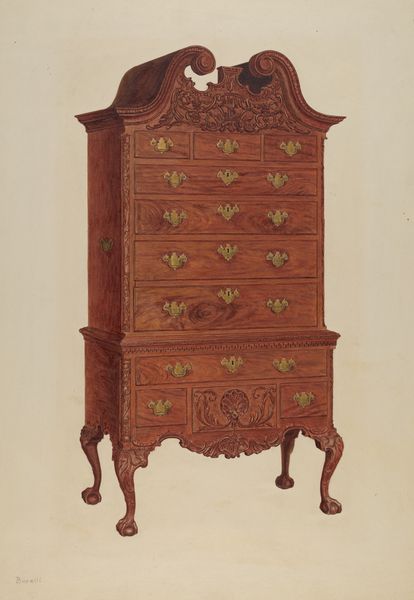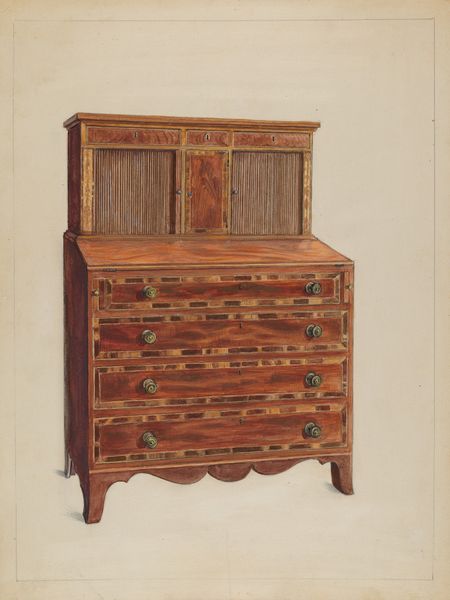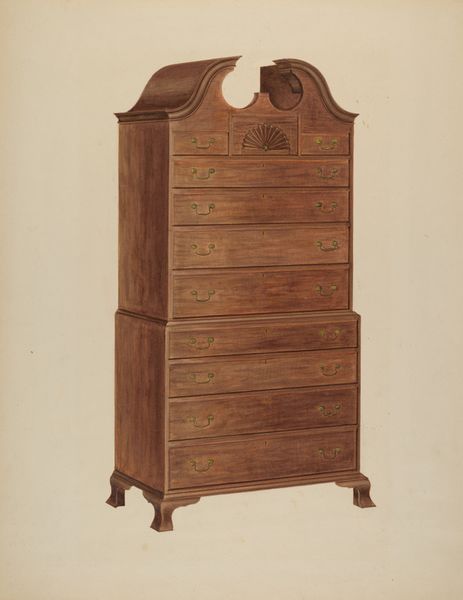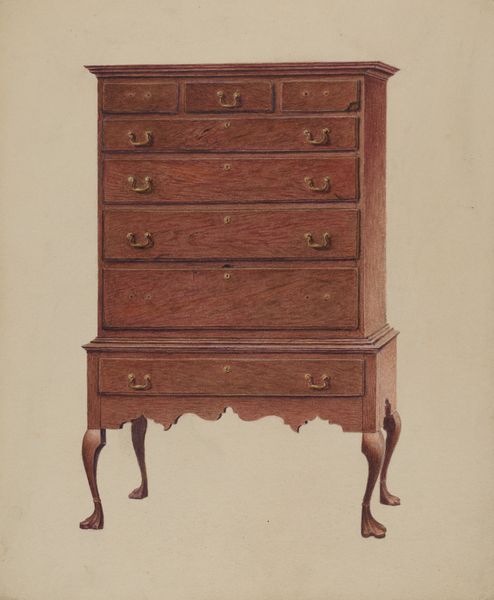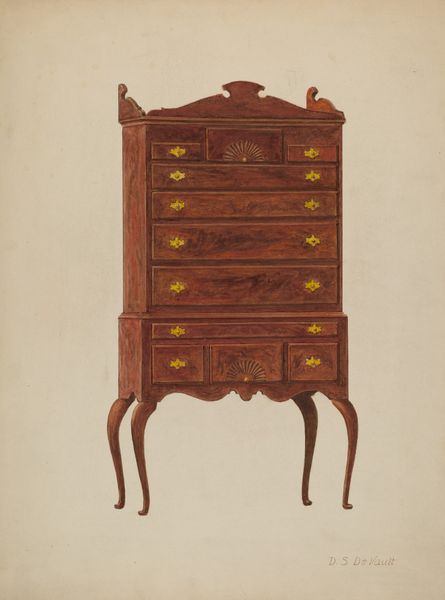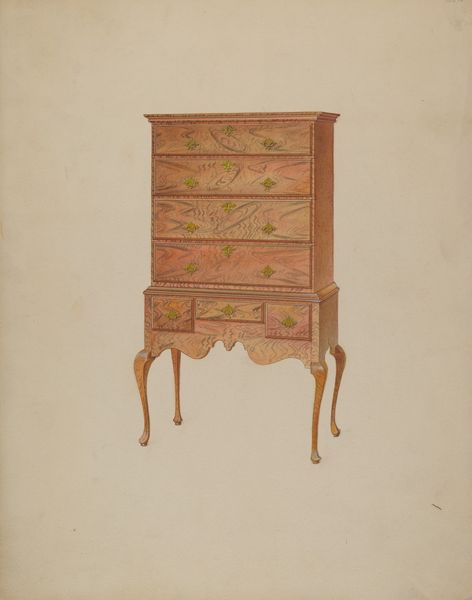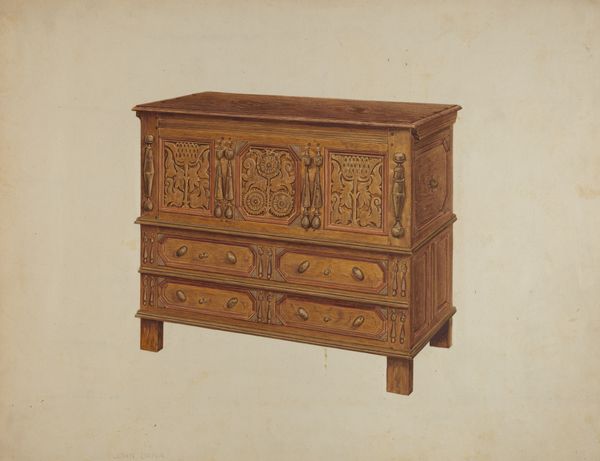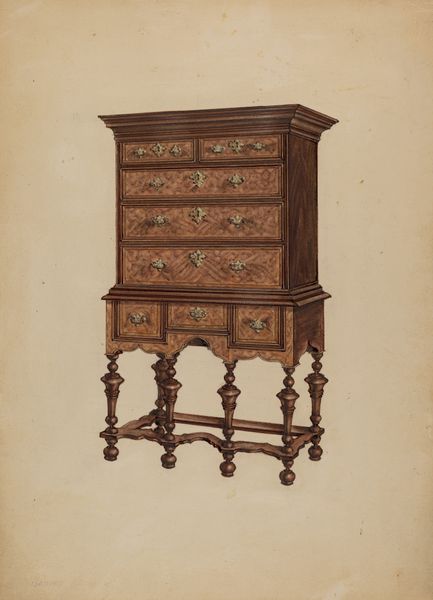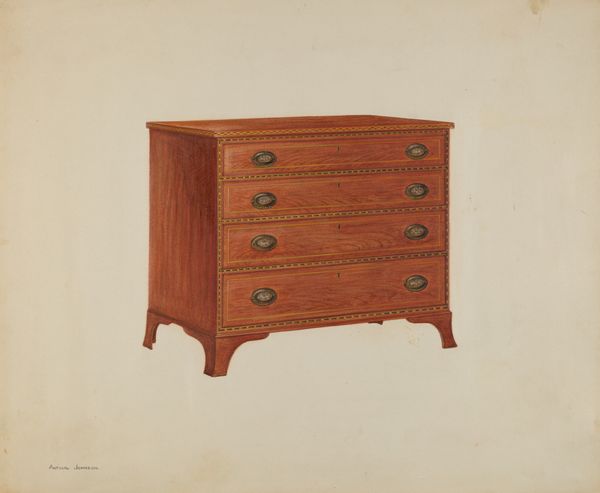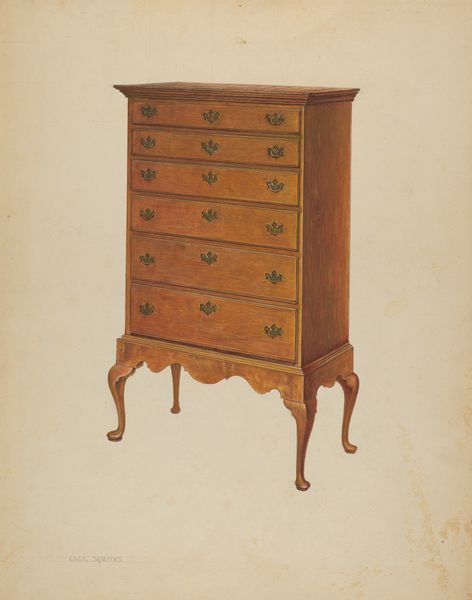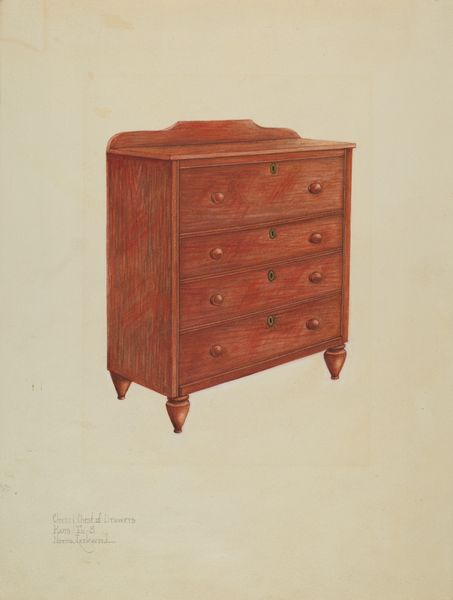
drawing, pencil, wood
#
drawing
#
pencil
#
wood
#
academic-art
#
watercolor
Dimensions: overall: 35.8 x 29.2 cm (14 1/8 x 11 1/2 in.) Original IAD Object: 75 1/2"high; 41"wide; widest depth 18 3/4. See data sheet for dets
Copyright: National Gallery of Art: CC0 1.0
Editor: We’re looking at Frank Wenger's "Chest-On-Chest" from around 1937, rendered in pencil, drawing, and probably wood, based on how the grain is depicted here. I’m struck by how much attention has been paid to showing the object realistically. What does this drawing tell us, do you think? Curator: Well, right away, I think about the labour involved, both in the creation of the actual chest and in Wenger’s careful rendering of it. Notice how meticulously he's documented the material, trying to show the grain of the wood with careful pencil strokes? It is almost photorealistic. This isn’t just about aesthetics. What statement could be possibly making? Editor: Maybe it's a celebration of the craft itself? An appreciation for the physical object and the skills involved in its creation? Is that relevant in this particular period of art making? Curator: Precisely! Think about the Depression era. There was a renewed interest in American craftsmanship and traditional skills, partly as a response to industrialization and mass production. By focusing on the meticulous details, Wenger elevates the everyday object, suggesting a resistance to the homogenizing effects of mass-produced goods. Who made the chest itself would be a next area of exploration. It is likely part of New Deal arts programs celebrating American craftsmanship. Editor: That's really interesting, seeing it as a sort of political statement embedded within this very careful drawing of furniture. I definitely hadn't thought about that angle. Curator: Absolutely! And it also challenges traditional notions of high art. Why paint a landscape or a portrait when you can elevate something functional like a chest-on-chest? Wenger asks us to consider the value and artistry inherent in everyday objects. It is both beautiful, functional and, given that it has been carefully reproduced by an artist, monumentalized and elevated. Editor: I’m now more convinced that the material of the furniture here carries so much significance, linking craft, labor, and this subtle push against the grain of what was considered proper "art" at the time. Curator: Exactly, and it prompts us to consider art, not just as something beautiful or detached, but intertwined with production and societal context.
Comments
No comments
Be the first to comment and join the conversation on the ultimate creative platform.
